How to Grow Blueberries: Essential Tips for a Bountiful Harvest
- March 19, 2024
- 15 comment
Learn How to Grow Blueberries, with their sweet-tart flavor and abundant health benefits, are a delight to grow in your own backyard. Whether you’re a seasoned gardener or a novice, cultivating blueberries can be a rewarding and fruitful experience. From selecting the right variety to providing optimal growing conditions, here’s a comprehensive guide on how to grow blueberries successfully.
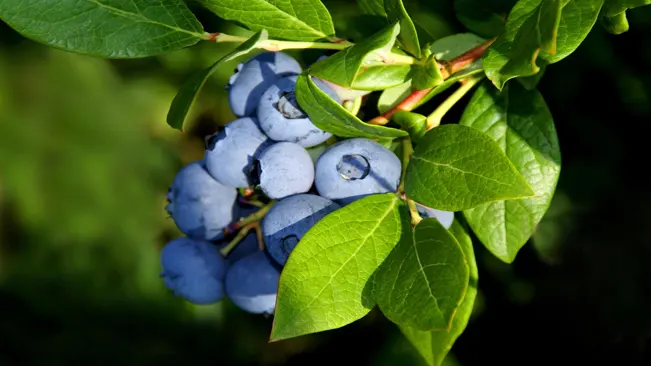
Benefits of Blueberries
| Description | |
|---|---|
| High in Antioxidants | Blueberries are packed with antioxidants, such as flavonoids and anthocyanins, which help protect cells from damage caused by free radicals. |
| Rich in Vitamins and Minerals | Blueberries are a good source of vitamin C, vitamin K, and manganese, essential for immune function, blood clotting, and bone health, respectively. |
| Supports Heart Health | Regular consumption of blueberries has been linked to improved heart health, including lower blood pressure and reduced risk of heart disease. |
| Brain Health Benefits | Studies suggest that the antioxidants in blueberries may help improve brain function, delaying age-related cognitive decline and enhancing memory. |
| Anti-Inflammatory Properties | Blueberries contain compounds that have anti-inflammatory properties, potentially reducing the risk of chronic diseases associated with inflammation. |
| Promotes Digestive Health | The fiber content in blueberries supports digestive health by promoting regular bowel movements and preventing constipation. |
| May Help Manage Blood Sugar | Blueberries have a low glycemic index and may help regulate blood sugar levels, making them a suitable snack option for individuals with diabetes. |
| Supports Eye Health | The antioxidants lutein and zeaxanthin found in blueberries may help protect against age-related macular degeneration and promote overall eye health. |
| May Aid in Weight Management | Blueberries are low in calories and rich in fiber, making them a filling and nutritious snack that can aid in weight management and satiety. |
| Skin Health Benefits | The antioxidants in blueberries may help combat oxidative stress and promote skin health, reducing signs of aging and improving overall complexion. |
List on How To Grow Blueberries
- Choosing the Right Variety
- Location and Soil Preparation
- Planting
- Care and Maintenance
- Pest and Disease Management
- Harvesting
Choosing the Right Variety
Before you start growing blueberries, it’s essential to select the right variety for your climate and soil conditions. Blueberries come in three main types: highbush, lowbush, and rabbiteye. Highbush blueberries are the most common for home gardens and offer a balance of flavor and adaptability to various climates. Lowbush blueberries are more cold-hardy and typically found in northern regions, while rabbiteye blueberries thrive in warmer climates.
Highbush Blueberries
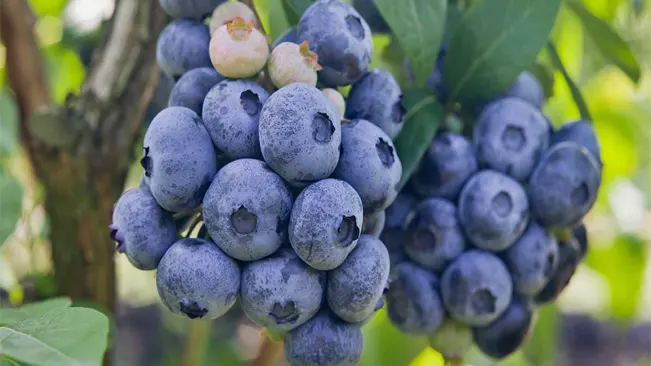
- Highbush blueberries (Vaccinium corymbosum) are the most widely cultivated type of blueberries and are well-suited for home gardens. They are known for their large, flavorful berries and adaptability to a wide range of climates.
- These blueberries are native to North America and are found growing wild in many regions. They typically grow best in temperate climates with cold winters and moderate summers.
- Highbush blueberry varieties come in both northern and southern types, with northern varieties being more cold-hardy and southern varieties better suited to warmer climates.
Lowbush Blueberries
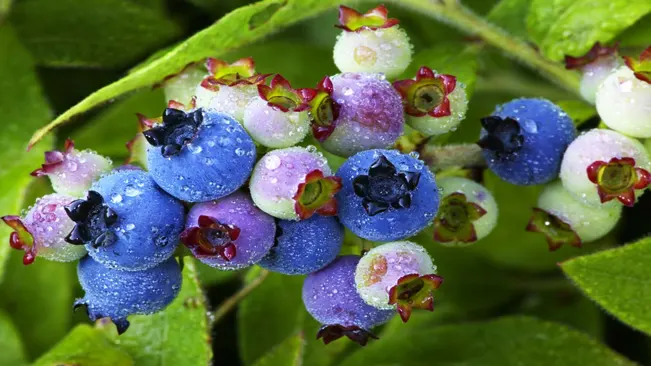
- Lowbush blueberries (Vaccinium angustifolium) are native to northeastern North America and are commonly found in regions with acidic, sandy soils, such as Maine and parts of Canada.
- These blueberries are known for their compact growth habit and small, flavorful berries. They are highly cold-hardy and can tolerate harsh winters, making them ideal for northern climates.
- Lowbush blueberries are often used for commercial wild blueberry production but can also be cultivated in home gardens, especially in colder regions.
Rabbiteye Blueberries

- Rabbiteye blueberries (Vaccinium virgatum) are native to the southeastern United States and are well-suited to warm, humid climates. They are named for the resemblance of their berries to the eyes of a rabbit.
- These blueberries are prized for their vigorous growth, heat tolerance, and large, sweet berries. They thrive in regions with long, hot summers and mild winters.
- Rabbiteye blueberry varieties are less cold-hardy than highbush or lowbush blueberries and may not be suitable for areas with harsh winters.
Location and Soil Preparation
Location
Blueberries thrive in locations that provide the right combination of sunlight, soil drainage, and air circulation. Here are some key points to consider when selecting a location for your blueberry bushes:
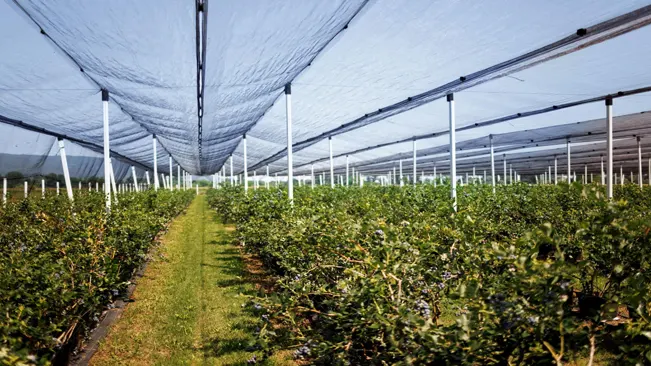
- Sunlight: Blueberries require full sun for optimal growth and fruit production. Choose a location that receives at least 6-8 hours of direct sunlight per day.
- Soil Drainage: Blueberries prefer well-draining soil to prevent waterlogging, which can lead to root rot and other diseases. Avoid planting blueberries in areas with poor drainage or where water tends to pool after rainfall.
- Air Circulation: Good air circulation helps prevent fungal diseases by reducing humidity around the plants. Avoid planting blueberries in dense, crowded areas where air movement is restricted.
Soil Preparation
Blueberries have specific soil requirements, including acidity and texture, to thrive. Follow these steps to prepare the soil for planting blueberries:
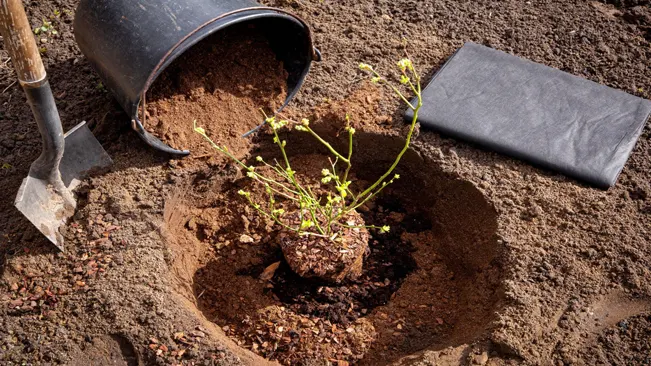
- Soil pH Testing: Test the soil pH using a soil testing kit or by sending a soil sample to a local extension service. Blueberries prefer acidic soil with a pH level between 4.5 and 5.5.
- Amending Soil pH: If the soil pH is too high (alkaline), you’ll need to lower it to the optimal range for blueberries. This can be done by adding elemental sulfur or acidic compost to the soil. Follow the recommendations provided by the soil test results for the appropriate amount of amendment needed.
- Soil Texture: Blueberries prefer soil that is well-draining and rich in organic matter. Incorporate organic amendments such as compost, peat moss, or pine bark into the soil to improve its texture and fertility.
- Raised Beds or Containers: If your soil is not suitable for blueberries or if you have limited space, consider planting blueberries in raised beds or containers filled with acidic potting mix. This allows you to control the soil pH and drainage more effectively.
Planting
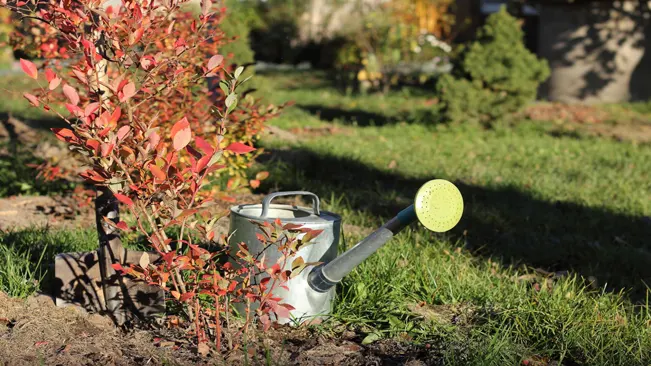
Timing
- Blueberries are best planted in either spring or fall when the weather is mild and soil conditions are favorable. Avoid planting during extreme temperatures or when the ground is frozen.
Spacing
- When planting blueberry bushes, ensure they are spaced about 4-6 feet apart. This spacing allows for adequate air circulation between plants, which helps prevent disease and promotes healthy growth. It also provides room for the bushes to spread as they mature.
Hole Preparation
- Dig a hole that is twice as wide and deep as the root ball of the blueberry plant. This ensures that the roots have plenty of room to spread out and establish themselves in the soil. Loosen the soil in the bottom of the hole to encourage root penetration.
Soil Amendment
- Blueberries thrive in acidic soil with a pH level between 4.5 and 5.5. Before planting, it’s essential to test the soil pH and amend it if necessary. Mix in organic matter such as compost, peat moss, or pine bark to improve soil structure, fertility, and acidity. This provides the ideal growing conditions for blueberries.
Planting the Blueberry Bush
- Carefully remove the blueberry bush from its container, taking care not to disturb the roots excessively. Place the plant in the center of the prepared hole, ensuring that the top of the root ball is level with the ground surface. Gently backfill the hole with soil, firming it around the base of the plant to remove air pockets.
Watering
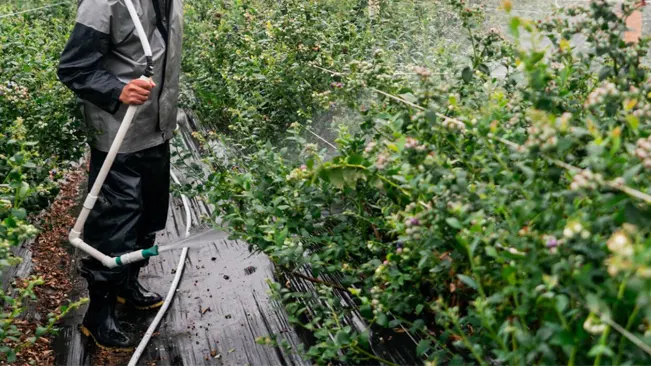
- After planting, water the blueberry bush thoroughly to settle the soil around the roots and provide moisture to the plant. Ensure that the soil is evenly moist but not waterlogged. Proper watering is essential for the establishment of the plant and encourages healthy root growth.
Mulching
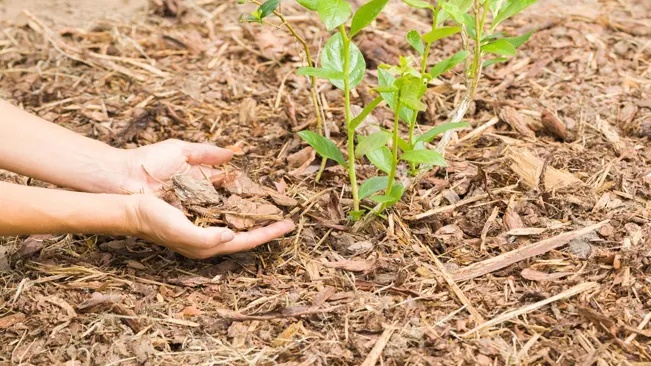
- Apply a layer of organic mulch, such as pine bark, wood chips, or straw, around the base of the blueberry plant. Mulching helps retain moisture in the soil, suppresses weeds, and regulates soil temperature. Leave a gap between the mulch and the base of the plant to prevent moisture-related issues.
Staking and Support
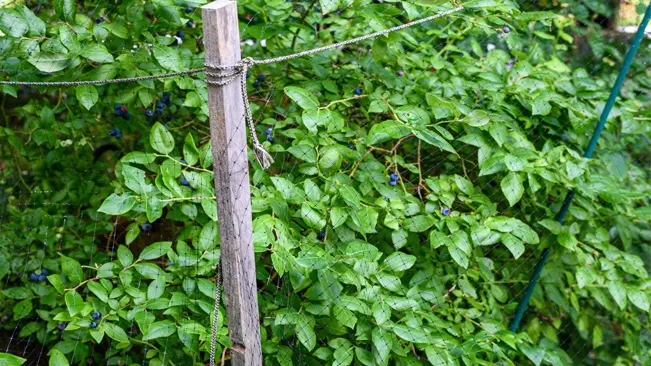
- Depending on the variety and growth habit of the blueberry bush, you may need to provide support or stake the plant to prevent it from leaning or bending under the weight of fruit. Use stakes or a trellis system to support the branches, especially as the plant matures and produces heavier fruit loads.
Care and Maintenance

- Watering: Blueberries have shallow root systems and require consistent moisture, especially during the growing season. Water deeply at least once a week, providing around 1 to 2 inches of water per week, depending on weather conditions.
- Mulching: Apply a 2 to 4-inch layer of organic mulch, such as pine bark or wood chips, around the base of the plants to conserve moisture, suppress weeds, and maintain soil acidity.
- Fertilizing: Blueberries have specific nutrient requirements, especially for nitrogen, phosphorus, and potassium. Use a balanced fertilizer formulated for acid-loving plants in early spring before new growth begins.
- Pruning: Pruning blueberry bushes is essential for maintaining plant health, promoting air circulation, and maximizing fruit production. Prune out dead, diseased, or overcrowded branches in late winter or early spring when the bushes are dormant.
Pest and Disease Management
Blueberries are relatively pest and disease-resistant, but they can still be susceptible to certain issues such as birds, aphids, mites, and fungal diseases like powdery mildew and botrytis. To manage pests, consider using bird netting, insecticidal soap, or horticultural oils. Proper pruning and sanitation practices can also help prevent disease outbreaks.
Pest Management
- Birds:
- Birds can be a significant nuisance for blueberry growers, as they often target ripe berries. To protect your crop, consider using bird netting. This fine mesh netting can be draped over the bushes during the fruiting season to prevent birds from accessing the berries. Alternatively, you can use scare tactics such as reflective tape or predator decoys to deter birds.
- Aphids:
- Aphids are small, sap-sucking insects that can infest blueberry bushes, causing stunted growth and distorted leaves. To control aphids, consider using insecticidal soap or horticultural oils. These organic treatments can be applied directly to the affected plants to suffocate and kill the aphids without harming beneficial insects.
- Mites:
- Mites are tiny arachnids that can infest blueberry bushes, causing stippled or bronzed foliage and reduced plant vigor. To control mites, consider using predatory insects such as ladybugs or predatory mites, which feed on pest mites. Additionally, spraying the bushes with a strong stream of water can help dislodge mites from the foliage.
Disease Management
- Powdery Mildew:
- Powdery mildew is a fungal disease that commonly affects blueberries, causing white powdery growth on the leaves and stems. To prevent powdery mildew, ensure proper air circulation around the plants by pruning out crowded or diseased branches. Additionally, avoid overhead watering, as wet foliage can promote fungal growth. If powdery mildew is present, consider applying fungicides labeled for use on blueberries.
- Botrytis (Gray Mold):
- Botrytis is a fungal disease that can affect blueberry flowers and fruit, causing gray mold and fruit rot. To prevent botrytis, avoid overhead watering and ensure proper air circulation around the plants. Remove and dispose of any infected plant material promptly to prevent the spread of the disease. If necessary, apply fungicides labeled for use on blueberries to control botrytis.
- Bacterial Diseases:
- Blueberries can also be susceptible to bacterial diseases such as bacterial leaf spot and bacterial canker. To prevent bacterial diseases, practice good sanitation by removing and disposing of infected plant material promptly. Avoid overhead watering, as water splashing can spread bacterial pathogens. If bacterial diseases are a recurring problem, consider applying copper-based fungicides as a preventative measure.
Harvesting
Most blueberry varieties ripen in mid to late summer, although the exact timing depends on the cultivar and growing conditions. Blueberries are ready to harvest when they turn deep blue in color and easily detach from the stem with a gentle tug. Harvest berries regularly once they ripen to encourage continuous fruit production.
Timing of Harvest
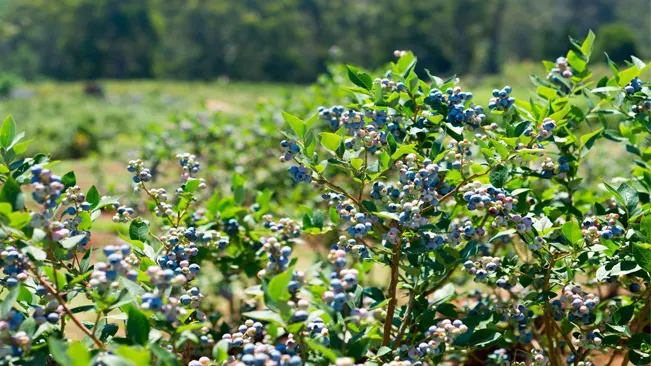
- Mid to Late Summer: Most blueberry varieties ripen during mid to late summer, typically from June to August, depending on your location and the specific cultivars you’re growing. The timing may vary based on factors such as climate, weather conditions, and the particular variety of blueberry.
Signs of Ripeness
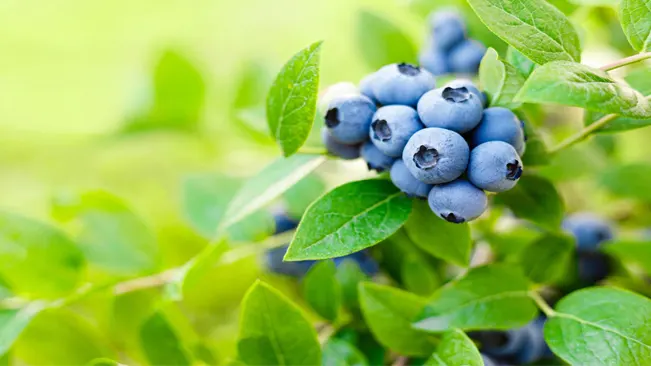
- Color: Ripe blueberries will have a deep, vibrant blue color. Depending on the variety, they may also exhibit shades of purple or even black when fully ripe. Immature berries are usually green or pink and will not develop their full sweetness until they reach their mature color.
- Texture: When gently touched, ripe blueberries should feel plump and firm. Avoid berries that are soft, mushy, or have blemishes, as they may be overripe or damaged.
- Ease of Detachment: Ripe blueberries will easily detach from the stem with a gentle tug. If you find yourself having to exert significant force to pick the berries, they may not be fully ripe yet. Be careful not to pull too hard, as this could damage the plant or the surrounding berries.
Harvesting Technique

- Gentle Handling: Handle blueberries with care to avoid bruising or damaging the delicate fruits. Use your fingers to gently grasp the berries near the base and give them a slight twist or tug to detach them from the stem. Alternatively, use scissors or pruning shears to snip the berries from the plant.
- Regular Harvesting: Harvest blueberries regularly as they ripen to encourage continuous fruit production throughout the season. Depending on the size of your blueberry patch, you may need to check for ripe berries every few days during the peak harvest period.
Post-Harvest Care
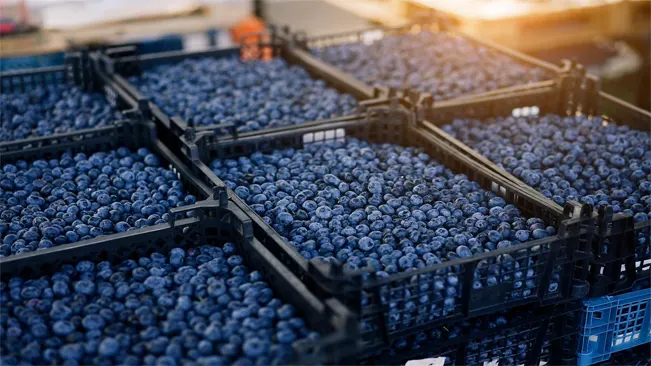
- Storage: Blueberries are best enjoyed fresh but can also be stored for a short period. After harvesting, remove any damaged or overripe berries and transfer the rest to a shallow container lined with paper towels to absorb excess moisture. Store them in the refrigerator and consume them within a week for the best flavor and quality.
- Freezing: If you have an abundance of blueberries, consider freezing them for longer-term storage. Wash and dry the berries thoroughly, then spread them in a single layer on a baking sheet and freeze until firm. Transfer the frozen berries to airtight containers or freezer bags and store them in the freezer for up to six months.
Related Post:
- How to Grow Ground Cherry: Simple Steps for Lush Growth
- How to Grow Spaghetti Squash: Your Thriving Garden Guide 2024
- How to Grow Runner Beans: A Comprehensive Guide for Bountiful Harvests
- How to Grow Jicama: Your Easy Guide to Cultivating the Mexican Yam Bean
- How to Grow Cinnamon Basil: A Beginner’s Guide to Aromatic Gardening
- How to Grow Roma Tomatoes: Expert Tips for a Lush Homegrown Harvest
- How to Grow Blackberries: Easy Steps to Grow and Nurture Your Own
Conclusion
Growing blueberries at home is not only enjoyable but also rewarding, providing you with a fresh supply of delicious and nutritious berries right from your garden. By following these tips on variety selection, soil preparation, planting, care, and maintenance, you can successfully grow your own bountiful blueberry harvest. With a little patience and dedication, you’ll soon be enjoying the sweet rewards of your labor straight from the bush to your table.
FAQs (Frequently Asked Questions)
- What type of soil do blueberries need?
- Blueberries thrive in acidic soil with a pH level between 4.5 and 5.5. Soil should be well-draining and rich in organic matter.
- Blueberries thrive in acidic soil with a pH level between 4.5 and 5.5. Soil should be well-draining and rich in organic matter.
- Do blueberries require full sun?
- Yes, blueberries prefer full sun exposure for optimal growth and fruit production. Aim for at least 6-8 hours of sunlight per day.
- Yes, blueberries prefer full sun exposure for optimal growth and fruit production. Aim for at least 6-8 hours of sunlight per day.
- How often should I water my blueberry plants?
- Blueberries have shallow root systems and require consistent moisture. Water deeply at least once a week, providing around 1 to 2 inches of water per week, depending on weather conditions.
- Blueberries have shallow root systems and require consistent moisture. Water deeply at least once a week, providing around 1 to 2 inches of water per week, depending on weather conditions.
- Do blueberries need to be fertilized?
- Yes, blueberries benefit from regular fertilization, especially with a balanced fertilizer formulated for acid-loving plants. Apply fertilizer in early spring before new growth begins.
- Yes, blueberries benefit from regular fertilization, especially with a balanced fertilizer formulated for acid-loving plants. Apply fertilizer in early spring before new growth begins.
- When is the best time to prune blueberry bushes?
- Prune blueberry bushes in late winter or early spring when they are dormant. Remove dead, diseased, or overcrowded branches to promote air circulation and fruit production.
- Prune blueberry bushes in late winter or early spring when they are dormant. Remove dead, diseased, or overcrowded branches to promote air circulation and fruit production.
- How do I protect my blueberries from birds?
- Use bird netting to cover blueberry bushes during the fruiting season to prevent birds from eating the berries. Alternatively, scare tactics such as reflective tape or predator decoys may deter birds.
- Use bird netting to cover blueberry bushes during the fruiting season to prevent birds from eating the berries. Alternatively, scare tactics such as reflective tape or predator decoys may deter birds.
- What pests and diseases should I watch out for when growing blueberries?
- Common pests that may affect blueberries include aphids, mites, and fruit flies. Diseases such as powdery mildew and botrytis can also be problematic. Proper sanitation and pest management practices can help prevent outbreaks.
- Common pests that may affect blueberries include aphids, mites, and fruit flies. Diseases such as powdery mildew and botrytis can also be problematic. Proper sanitation and pest management practices can help prevent outbreaks.
- Can I grow blueberries in containers?
- Yes, blueberries can be grown in containers filled with acidic potting mix. Choose a large container with adequate drainage holes and use a variety of blueberry suitable for container growing.
- Yes, blueberries can be grown in containers filled with acidic potting mix. Choose a large container with adequate drainage holes and use a variety of blueberry suitable for container growing.
- How long does it take for blueberry bushes to bear fruit?
- Blueberry bushes typically start producing fruit 2-3 years after planting, although it may take longer for a full harvest. Patience is key as blueberry bushes become more productive with age.
- Blueberry bushes typically start producing fruit 2-3 years after planting, although it may take longer for a full harvest. Patience is key as blueberry bushes become more productive with age.
- Do I need to plant multiple blueberry bushes for cross-pollination?
- While some varieties of blueberries benefit from cross-pollination for increased fruit yield, many self-pollinate to some extent. However, planting multiple varieties can improve fruit set and harvest yield. Check the specific requirements of the blueberry cultivars you’re growing.

Kristine Moore
Forestry AuthorI'm Kristine Moore, a seasoned garden landscaping professional with over 30 years of experience. My extensive career has been dedicated to transforming outdoor spaces into stunning, sustainable landscapes. With a deep understanding of horticulture, design principles, and environmental stewardship, I have become a respected figure in the field, known for creating harmonious, visually appealing, and eco-friendly gardens. My commitment to excellence and continuous learning in landscaping trends and techniques has solidified my reputation as an expert in garden design and implementation.
15 comments
Please tell me the best blueberry bush to buy
Lathika
March 25, 2024 1:30 pmI use all of our coffee grounds year round on our six blue berry bushes to acidity the soil. We drink coffee daily so the spent grounds do not go to waste.The ph of coffee grounds is near a ph of 5, so they are an ideal soil amendment for any acid loving plants. I had trouble using enough sulfer amd aluminum sulfate when trying to sufficiently lower the alkalinity of our soil. My six 12 year old bushes regularly product 18 quarts a year for the freezer so we can enjoy them all winter. I mulch them with white pine needles and fertilize them with compost, manure and a bit of a balanced fertilizer as winter is ending so the snow and spring rain helps to dissolve the nutrients
Ed Svetich
March 25, 2024 1:17 amGreat job using coffee grounds to acidify the soil for your blueberry bushes! Your use of white pine needles as mulch and a mix of compost, manure, and fertilizer for nutrition is impressive. It's clear your efforts are paying off with a bountiful harvest. Thanks for sharing your tips, and enjoy those delicious blueberries all winter!
Kristine Moore
March 25, 2024 5:51 amI planted my first blueberry plants last year and have lost one plant due to extreme heat in AZ even though I have them canopy cover My other plant is just twigs and stems no leaves. But showing small green shoots coming out. My question is "is it normal to lose all the leaves in the winter time"?
Pat
March 24, 2024 5:51 pmI'm sorry to hear about your blueberry plants. It's normal for them to lose their leaves in winter, as they are deciduous. The small green shoots are a good sign of new growth. In Arizona's heat, make sure your plant has well-draining soil, enough water, and some shade during the hottest part of the day. Mulching can also help keep the roots cool. Best of luck!
Kristine Moore
March 25, 2024 5:52 amThank you, the information, is beneficial. We mentor emerging farmers in South Africa and blueberry ia another opportunity for them to explore and succeed.
Steven Francis
March 23, 2024 6:48 pmYou're welcome! I'm glad the information is helpful for your work with emerging farmers in South Africa. Blueberries can be a great opportunity for them. If you have more questions or need assistance with blueberry cultivation, feel free to reach out. Wishing you all great success!
Kristine Moore
March 25, 2024 5:53 amThank you. I love this and would to try planting. Can I get a PDF copy of your detailed instructions please.
Rodger Mubvumba
March 23, 2024 12:14 pmGreat information,would like some more emails on other fruit. Thank you
Agnes
March 23, 2024 4:07 amExcellent
ASAD ASADI ABKENAR
March 22, 2024 7:21 pmThank you for the info .Can I grow blueberries from seeds.Iam iAfrica no where to find seedlings .how can I grow seedlings from store bought blue berries Thank you
Mercy mosarwe
March 22, 2024 7:25 amYou can grow blueberries from seeds by extracting seeds from fresh berries and rinsing them clean. They need cold stratification, so mix the seeds with moist peat moss or sand and refrigerate for 3 months. Sow the seeds in well-draining soil, lightly cover them, and keep the soil moist. Place the tray in a warm, bright spot but out of direct sunlight. Germination takes several weeks to months. Once seedlings emerge, ensure they get indirect sunlight and regular watering. Transplant them into individual pots when they are a few inches tall with several true leaves. Growing blueberries from seeds takes a few years before they bear fruit. Good luck with your blueberry growing in Africa!
Kristine Moore
March 25, 2024 6:01 amWhere can I get the fertiliser suitable for blueberry? And ehat is the best fertiliser?
Adib
March 22, 2024 2:47 amCertainly! Look for a fertilizer formulated for acid-loving plants, such as those labeled for azaleas, rhododendrons, or camellias. A balanced, slow-release fertilizer with an NPK ratio of about 10-10-10 or 12-4-8 is ideal. You can find these fertilizers at garden centers, nurseries, or online. Follow the instructions on the packaging for application.













Salam I need blueberry seeds in Lahore Pakistan
Muhammad saleem
March 26, 2024 11:52 pm